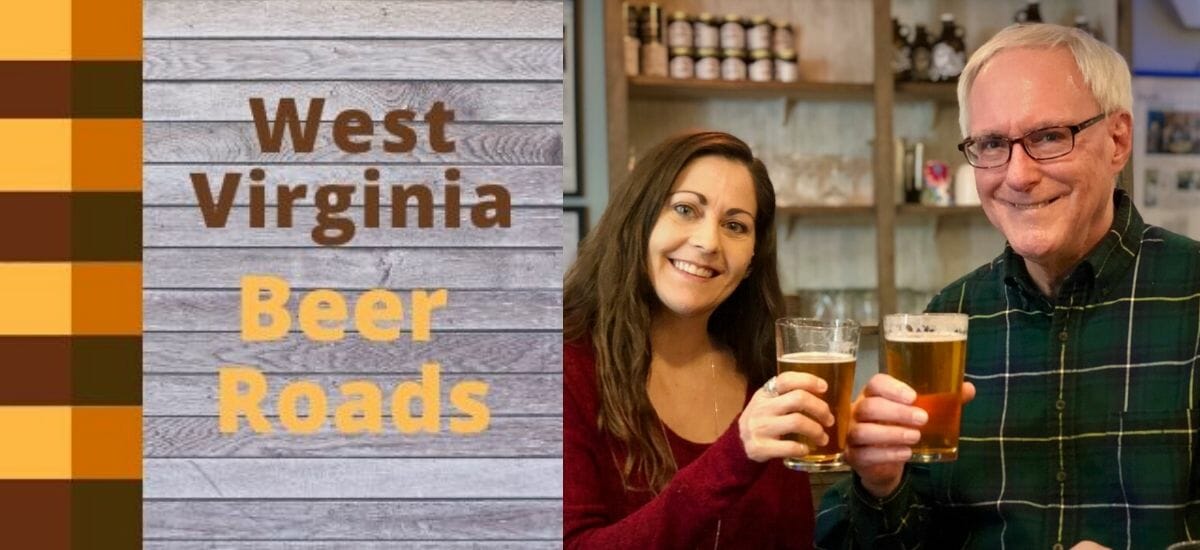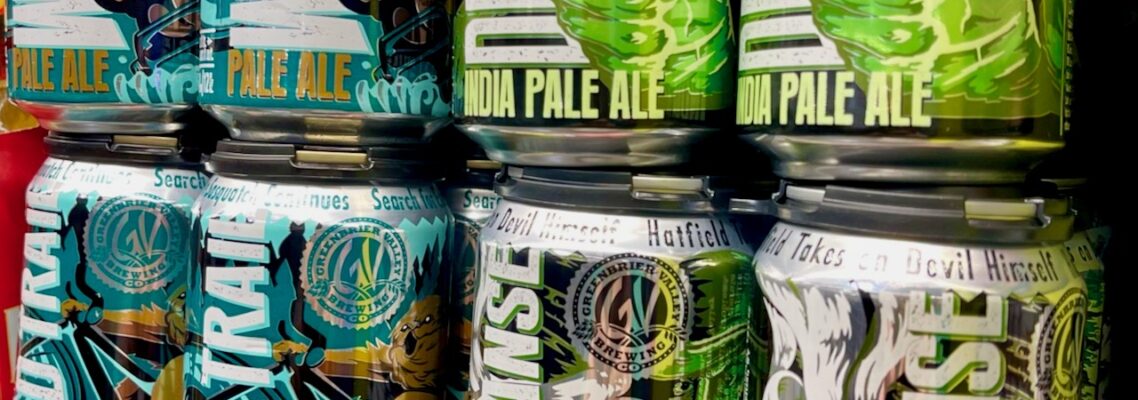
Barron brews strong at Greenbrier Valley Brewing
February 9, 2024
Last summer, as Greenbrier Valley Brewing (GVB) returned from its several-month hiatus with a new owner and new thinking, among its best moves was bringing in Dave Barron as its head brewer. That hire is already producing positive and needed changes at the brewery.
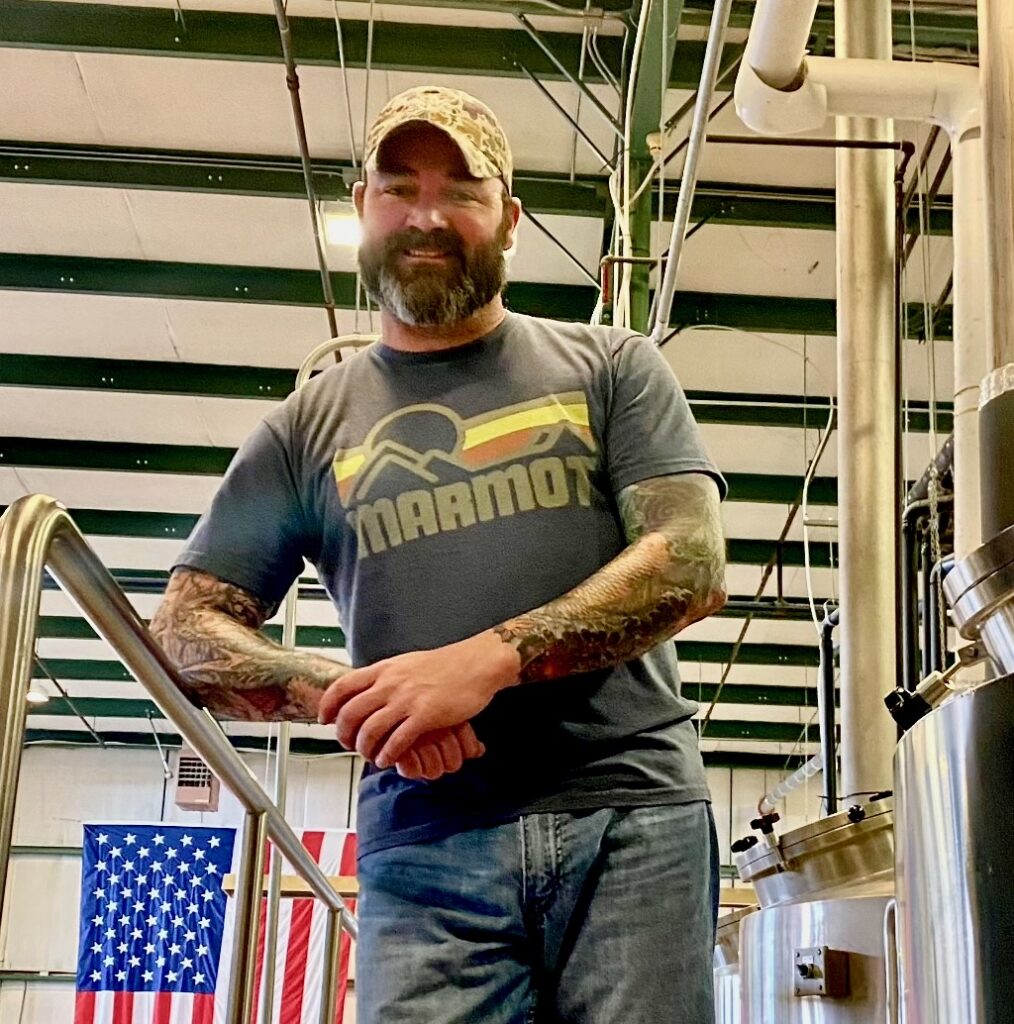
Barron, who had formerly worked as a GVB brewer before leaving to brew at start-up Big Draft Brewing in Lewisburg, was very familiar with the brewery’s product line. While Barron was still brewing at Big Draft, he had developed a relationship with GVB’s new owner, Josh Bennett, as he did some side-project work at Bennett’s Hawk Knob Cidery, Then, with Big Draft shutting down last summer, it was a no-brainer for Dave to accept Bennett’s offer to become head brewer at the renewed GVB.
His return to GVB was warmly welcomed by others on the GVBC staff. “Everybody had open arms and told me they were glad I was home,” he said. Barron immediately got to work.
Leaders collaborate to set new directions
First thing up last summer, GVB’s brain trust — including Barron, brewery owner Josh Bennett, brewery V.P. Jason Nerenberg, production manager Jeff Frizsell, along with other key staff members — all weighed in on how they could best restart GVBC. The brewery had been closed since early spring, and they needed a plan for reopening and re-establishing their brands in the West Virginia marketplace.
Together, they decided to initially re-start production with what they felt would be their four best-selling core brands, and then reintroduce others down the road. The first four chosen were Devil Anse IPA, Wild Trail Pale Ale, Mothman Black IPA, and Braxxie Blonde Ale.

Recipes and ingredients were reviewed and finalized with the team putting a priority on beer quality.
“I wanted to make sure we got everything back in order on the brewing end,” Barron explained, “including tightening up some recipes.” It was a step very much needed and one that should pay future dividends.
Brewing and distribution activities restarted in late summer 2023. By mid-fall, all four beers were back in the market.
With Barron running the brewhouse, GVB appears to be headed in a positive direction. Market reports on the re-introduced Devil Anse IPA have been especially strong. It appears to be back in top form and selling well. That’s important because Devil Anse is the brewery’s signature brand.
Brewing lager again
Beyond the first four core ale brands, the next recipe to be rebrewed and offered to distribution was Bat Boy Black Lager. It’s out in limited distribution right now, including at the Snowshoe ski resort.
It does seem unusual for a brewery to prioritize brewing a Black Lager first before it offers its potentially much better-selling Pale Lager to the market. We discovered that this market strategy is wrapped up in the brewery’s decision to completely reformulate its primary pale lager brand, Ole Ran’l Pilsner.
Even understanding that pale lagers are gaining a lot of sales momentum in the craft beer market these days, Ole Ran’l Pilsner didn’t make GVB’s initial cut for re-introduction. The leadership team decided they wanted a Pilsner back in their lineup, but felt Ole Ran’l Pilsner first needed some tweaking.
Ole Ran’l was a beer that had been a GVB regular over the past several years but was one that had never really caught on in the market like you might expect a Pilsner style to do. Before they attempted to rebrew it, they decided to give it a makeover.
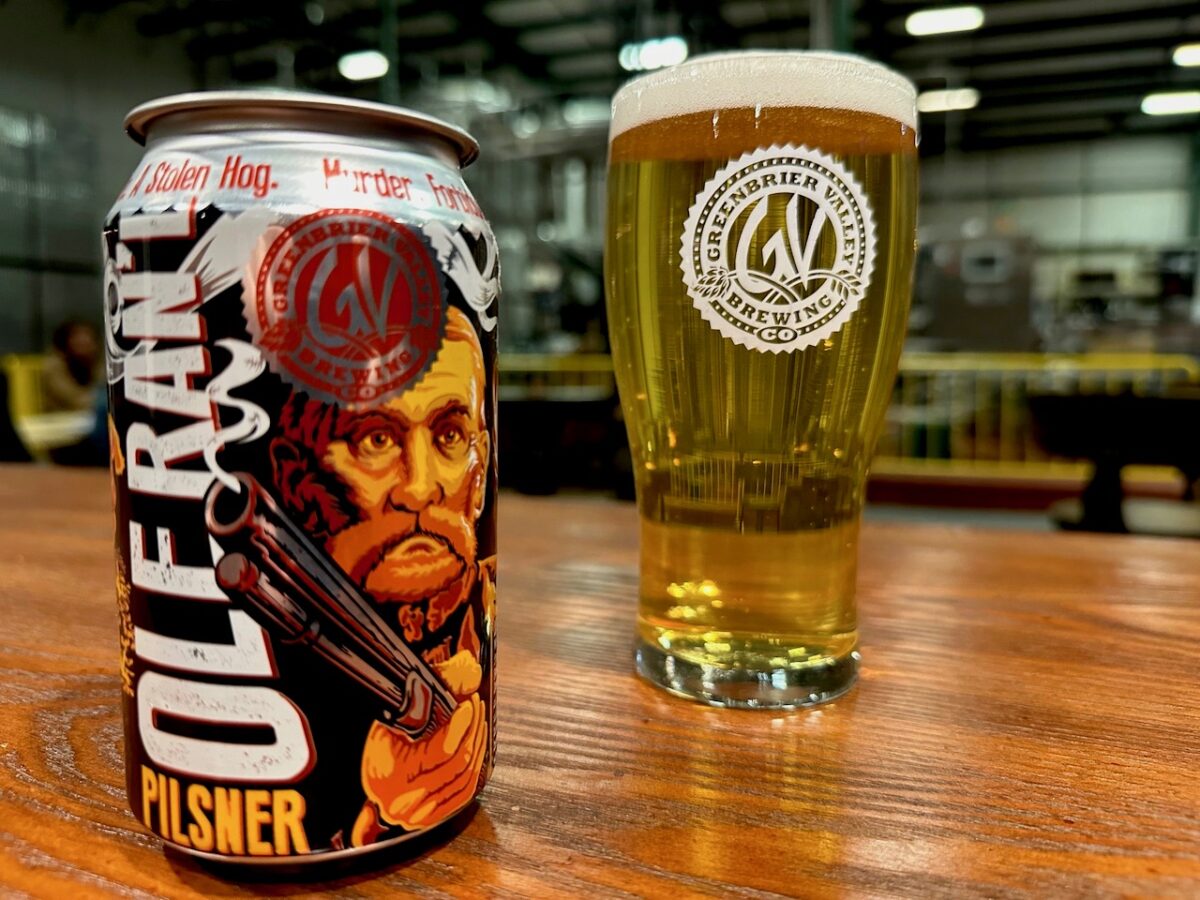
Ole Ran’l Pilsner moves to classic style
While the original recipe for Ole Ran’l Pilsner made an okay beer, it definitely was not a classic “Pilsner” even though its label said Pilsner. For many, its non-traditional taste skewed too far from what folks expected in a pilsner beer.
The original beer’s largest style divergence was the inclusion of non-traditional hops. This made a huge impact on its flavor. Its use of fruity, new-age German hop varieties (Heull Melon, Hallertauer Blanc, and Manderina Bavaria) produced flavors quite different from the standard noble German hops you’d find in a classic Bavarian Pilsner recipe.
The new GVB crew decided to redo the beer’s taste profile and reformulate it as a classic Bavarian-style Pilsner. It’s a move that should allow the beer to connect much more broadly with beer drinkers.
The Ole Ran’l reformulation
“I wanted to bring it back to simple German-style noble hops,” says Barron about his overall plan to reformulate Ole Ran’l.
For bittering hops he went with German Magnum. For classic Pilsner aroma and flavor, he added an ample dose of Hallertauer Mittelfrüh late in the boil. Then to further enhance those lovely Conentintal Pilsner characteristics, he went with a late addition of Saaz hops.
And where the original recipe’s hops gave the beer a very non-traditional flavor, the new recipe walks a straight line to that beautiful classic Pilsner style. If you long for a classic, crisp premium Pilsner flavor — a bit earthy and herbal with its impressions of new-mown hay, sweet spices, and dried flowers, then you’ll enjoy the new Ole Ran’l recipe.
Barron also made a slight change to the malt bill. “I added a little bit more Carafoam just to give it more body and head retention,” he says. The vast majority of the grain used is traditional Pilsner malt.
For fermentation, he switched the yeast to Fermentus S189. It’s a lager yeast he knew very well and liked from his time at Big Draft Brewing. It produces a clean bright beer and enhances the herbal-light floral notes.
“We ferment at 55 degrees and step it down after we reach terminal gravity,” Barron explains.
Following fermentation, the beer was chilled to 44 degrees and lagered for about five weeks. It was then kegged for draft and also packaged in 12 oz. cans. This recipe for Ole Ran’l came out at 5.1% A.B.V.
A much more Pilsner-like flavor
Overall, Barron says of the new recipe, “It’s not as floral as the original recipe, but it’s cleaner and more balanced.”
A first-evaluation run of the new Ole Ran’l recipe is currently on tap and in cans at the brewery’s taproom in Maxwelton. Once a final evaluation of hopping rates, brewing/fermentation benchmarks, and lagering time is completed and put together with sensory analysis and consumer comments, the final beer recipe and brew process will be determined.
GVBC expects the beer to hit their large brewing system and then be available for distribution later this year. Our kudos go out to Barron and crew for reengineering this beer to bring its taste more in line with its Pilsner name.
Joining the feud
Among the best things all the versions of Greenbrier Valley Brewing ownership have done is capitalize on the myths and legends of West Virginia. The Ole Ran’l brand not only fills the popular pale lager category for the brewery, but it also represents the McCoy side of the Hatfield-McCoy Feud. Devil Anse (Hatfield) needs an Ole Ran’l (McCoy) to complete the feud scenario. It will be good to see both these labels back in wide distribution in West Virginia.
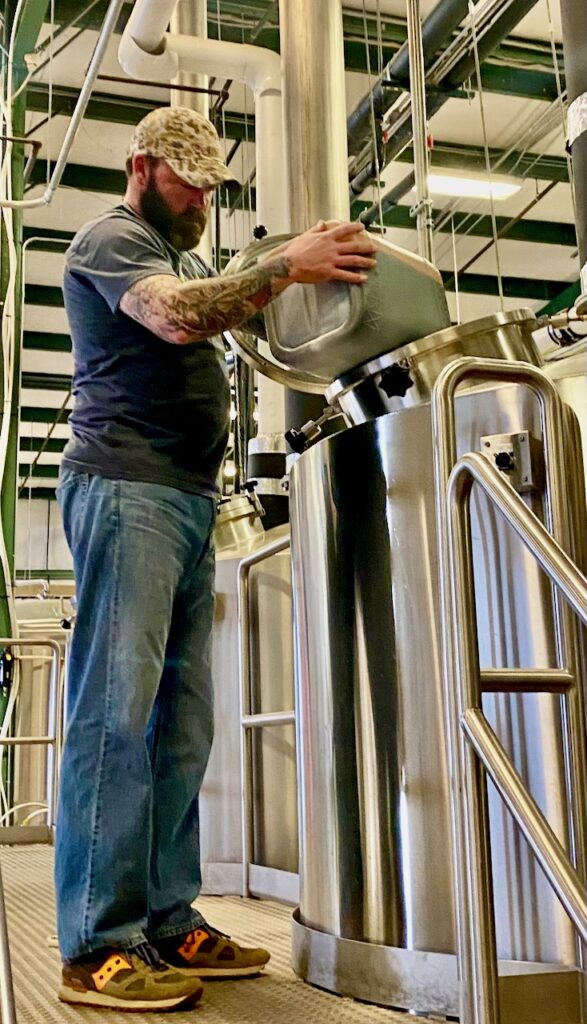
Barron a busy guy
2024 is starting off with a flurry of activity in the Greenbrier Valley brewhouse.
Barron says he says he and production manager Jeff Frizsell map out the brewing schedule a month at a time. Barron then oversees all brewing-related activities on the big brewing system, while Frizsell manages the small-batch system. Barron is responsible for training assistants; developing recipes; and managing grain, hops, and yeast inventories for the big runs of beer he brews. Of course, running, maintaining, and cleaning the actual brewing system takes up most of his time.
Next up at GVB
A beer already in process at the brewery is Irish Dave’s Maple Bourbon Porter. It’s a former GVB beer that the brewery has not brewed for the past several years. And it’s not your everyday Porter. .
The “Dave” in the name comes from recipe originator Dave Barron, harking back to his first stint as a GVB brewer. His recipe includes a dose of locally sourced maple syrup, which gives the beer a nice touch. It’s also a beer that blends two portions together: one, a straight Porter, and the other, a bourbon-barrel-aged version.
“We recently put the first batch [of Irish Dave’s] in barrels used for seven-year-old Old Scout Bourbon,” explains Barron. “It will sit there for four weeks.” This week he brewed another batch of the base beer, which he will then blend with the bourbon-barrel-aged batch to produce the beer that will be released in March for the St. Patrick’s Day season. Barron says to expect a fun release party with music at the brewery on March 10, a week before St. Patrick’s Day.
But wait there’s more
Next week Barron will be brewing 36 Parks Pale Ale. It’s the new version of the former 35 Parks Pale Ale. As the beer has in the past, it will continue to use local unmalted wheat for a portion of its grain bill. It’s one park more than the original 35 Parks due to the state having recently added one more state park. Overall, we’re told to expect a very similar recipe to the former one for this pale ale.
Coming up sometime later this spring will be their next reformulated core brand recipe. A new version of Zona’s Revenge Wit Bier will be produced for full-time statewide distribution.
“We’re going to rethink that beer and maybe make a few slight changes to it,” Barron says. “We’ll run it on the small batch system first and see how it goes when we put it out in the taproom. We want to get customer feedback and go from there before we hop up and brew it on the big system.”
Also in the brewing schedule, Barron will be making his Oktoberfest beer. “We’re working on that now,” he says. “I’ve got a recipe together for it. We’re going to go with a super-long lagering stage on it. We’ll bring it out when the time is right.”
Expect this Oktoberfestbier to be a straight-down-the-line, traditional Bavarian Märzen in style. From remembering the Märzen that Barron brewed at Big Draft Brewing, the beer should be tasty and fun.
“Everyone tells you that Q1 is the slow quarter,” says Barron, “but I’ve got my hands into more things now than I ever had in the past.”


